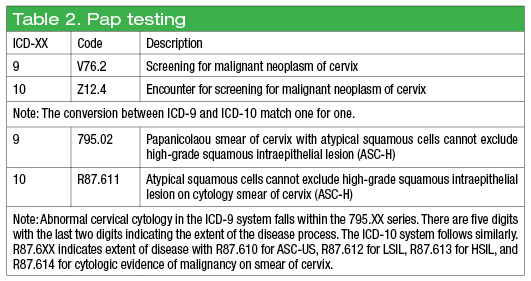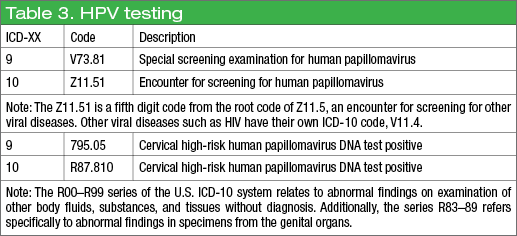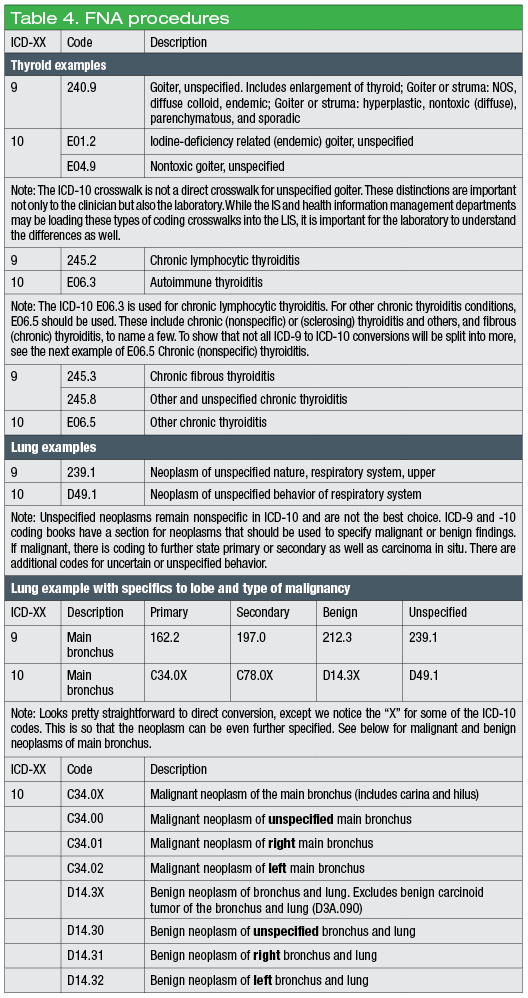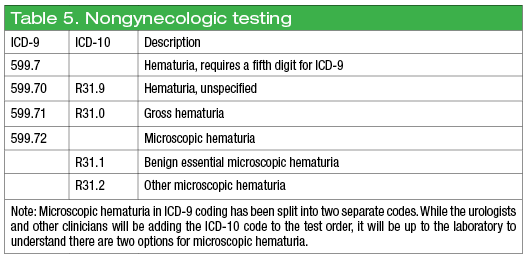- Start with the ICD-9 code you have used in the past.
- Understand the description of the code.
- Look up the ICD-10 equivalent code.
- Review the description of the ICD-10 code. Do the two match? Check with the rest of the series to see if there is a more appropriate code.
- Check on the guidance that may be present. Look for discussion of additional digits. Are there other codes in the series that may be more appropriate?
For perfect due diligence, best practice is to then use the ICD-10 coding book on the specific code using the tab and index formats to make sure no other more appropriate codes are available. This will likely be the case starting October 2016, when the 2017 coding book comes out. The CMS has not updated ICD-9 codes extensively since the last regular update to ICD-9-CM and ICD-10 code sets was made on Oct. 1, 2011.
Cytopathology examples. Let’s look at a few examples for cytology specimens to see how the crosswalk might work. This would be one of several different ways to perform these tasks.
For Pap testing, in keeping with the ICD-9 V76.2 code, the direct conversion for ICD-10 is Z12.4. In terms of the description, they are the same as well. An example for a follow-up of abnormal cytology is also provided (Table 2).

For HPV testing, the ICD-9 code for HPV screening (Table 3) is V73.81, and the direct conversion to ICD-10 is Z11.51. (V codes are now Z codes.)

For fine-needle aspiration procedures, Table 4 contains a crosswalk of a few types of diagnosis codes for thyroid and lung.
For nongynecologic testing, let’s look at urine and bladder cytology in the same way as we have the others. Hematuria is often provided to the laboratory as the medical reason for urine/bladder cytology and a fifth digit is required in ICD-9 to further specify the type of hematuria. The same holds true for ICD-10, as we can see in Table 5.


Michele Smith is director of the cytotechnology program, clinical assistant professor, and manager of cytology services, Wisconsin State Laboratory of Hygiene, University of Wisconsin-Madison. For CMS’ “Countdown to ICD-10,” see www.cms.gov/Medicare/Coding/ICD10/index.html?redirect=/ICD10. From that site, you can access multiple links, including “Road to 10” (www.roadto10.org).
1111
 CAP TODAY Pathology/Laboratory Medicine/Laboratory Management
CAP TODAY Pathology/Laboratory Medicine/Laboratory Management
